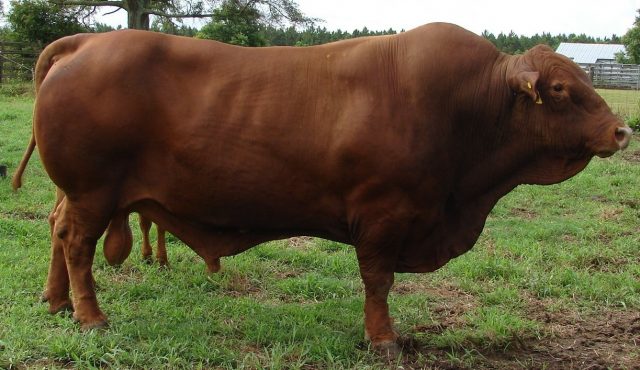Type the name of the breed you're looking for below
[wpdreams_ajaxsearchlite] Don't see the breed your're looking for? Click here and let us know!
Senepol cattle
| Place of Origin | St. Croix |
| Origin | Until recently, it was believed that N'Dama cattle were imported to St. Croix from Senegal in the 19th century, being better suited to the climatic conditions than European breeds. One of the largest herds of over 250 head was owned by Henry C. Nelthropp at the Granard Estates. In 1918 Henry's son Bromley bought a Redpoll bull from Trinadad to improve the cows' milking ability and remove their long horns and thus would have cross Ndama and red Poll. However, genetic characterisation using high throughput SNP (Single Nucleotide Polymorphism) genotyping demonstrated that Senepol originated actually from crosses between a European taurine, Red Poll (90% ancestry), and Zebu (10% ancestry). Senepol does not have any Ndama ancestry (Flori et al 2012, PLoS ONE, published 09 May 2012 10.1371/journal.pone.0036133). The admixed cattle were selected for solid red color, natural polling and heat tolerance. These offspring were dispersed to four main herds on the island. The name Senepol was adopted in 1954 and a breed registry was established in the late 1960s. Aided by the United States Department of Agriculture the College of the Virgin Islands Extension Service began on farm performance testing in 1976. In 1977 22 cows were taken to the United States and the breed has since spread across the southern states. There are now more than 500 breeders with more than 14,000 registered cattle. They are also found in Australia, South Africa, Botswana, Namibia, Venezuela, Mexico, Paraguay, Philippines, Zimbabwe and Brazil. |
| Purpose | Beef and dairy production. |
| Appearance | They are short haired, and coloured red, black or brown. |
| Horns | Naturally polled (hornless). |
| Other Considerations | USDA research indicates that Senepol have greater immune response when compared to other beef breeds. This is likely due to the indicine influence in Senepol, and is also aided by generations of natural selection being applied on the island of St. Croix. In the 1950s, with sugar cane becoming less economic, the United States Department of Agriculture put resources into the teaching of scientific breeding under Richard Marshall Bond. |



